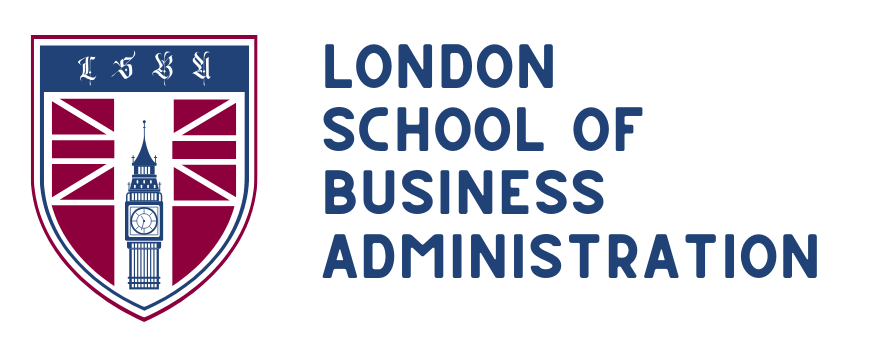Blog
Strategic Thinking for Leaders: Turning Vision into Action
In an era of rapid technological change, global competition, and shifting customer expectations, leaders are expected to do more than manage day-to-day operations. They must envision the future and chart a course to get there. This requires strategic thinking—the ability to look beyond immediate challenges, identify long-term opportunities, and translate ambitious goals into achievable results.
This article explores how strategic thinking helps leaders turn vision into action and how the Leadership and Management Programme at London School of Business Administration equips professionals to develop this essential competency.
1. Understanding Strategic Thinking
Strategic thinking is more than planning; it is a mindset and discipline that allows leaders to see the bigger picture. It involves:
- Analysing market trends, competitor moves, and emerging technologies
- Anticipating risks and opportunities
- Aligning resources and people around long-term objectives
Leaders who think strategically can navigate complexity and make proactive choices, ensuring their organisations stay relevant and resilient.
2. Crafting a Clear and Inspiring Vision
Every successful strategy begins with a compelling vision of the future. Vision answers fundamental questions: Where do we want to go? What impact do we aim to have on customers, employees, and society?
Effective leaders:
- Engage stakeholders in shaping the vision
- Articulate goals that are ambitious yet attainable
- Communicate purpose with clarity and passion
A strong vision provides direction and motivates teams to contribute their best efforts.
3. Turning Vision into a Strategic Roadmap
Vision without action remains an idea. Strategic thinking requires translating aspirations into a concrete roadmap with measurable milestones.
This involves:
- Conducting a SWOT analysis to assess strengths, weaknesses, opportunities, and threats
- Setting long-term objectives and defining key performance indicators (KPIs)
- Prioritising projects and allocating budgets effectively
By breaking large goals into actionable steps, leaders can guide daily operations while keeping the bigger picture in focus.
4. Making Data-Driven Decisions
Modern leaders must combine foresight with data-driven decision-making. Financial reports, customer analytics, and market research provide the evidence needed to test assumptions and reduce risk.
Key practices include:
- Using data to monitor progress and adjust strategy
- Conducting scenario planning to prepare for different market conditions
- Balancing quantitative analysis with creative problem-solving
This approach ensures that every strategic move is grounded in insight and measurable impact.
5. Engaging and Empowering Teams
Turning vision into action requires collaboration and alignment across the organisation. Leaders must inspire and empower people to take ownership of strategic goals.
Critical leadership skills include:
- Communicating strategy clearly at all levels
- Delegating authority and trusting team expertise
- Recognising and rewarding contributions to keep motivation high
By fostering a sense of purpose and accountability, leaders create a culture where strategy becomes everyone’s responsibility.
6. Building Agility and Adaptability
The business landscape rarely follows a straight line. Strategic thinkers design plans that are flexible and responsive to change.
They achieve this by:
- Reviewing progress regularly and adjusting priorities
- Monitoring external factors such as market trends and regulatory shifts
- Encouraging innovation and experimentation within teams
This adaptability allows organisations to pivot quickly when opportunities arise or challenges emerge.
7. Leading with Ethics and Long-Term Responsibility
Sustainable strategies require ethical leadership and a commitment to long-term value creation. Stakeholders—customers, investors, and employees—expect organisations to act responsibly.
Strategic leaders integrate:
- Environmental and social considerations into planning
- Transparent governance and responsible resource management
- Decisions that balance profitability with positive societal impact
This not only protects reputation but also builds trust and resilience over time.
8. Continuous Learning and Future Readiness
The ability to think strategically is not static—it requires continuous learning and curiosity. Leaders must stay ahead of trends in technology, economics, and consumer behaviour.
Practical ways to maintain strategic sharpness include:
- Attending industry conferences and professional training
- Seeking mentorship and peer collaboration
- Regularly challenging assumptions and encouraging fresh perspectives
By cultivating a habit of learning, leaders ensure their strategies remain innovative and forward-looking.
Why Choose LSBA’s Leadership and Management Programme
The London School of Business Administration’s Leadership and Management Programme helps current and aspiring leaders transform strategic vision into measurable action.
Key features include:
- Flexible, fully online learning, ideal for busy professionals
- Real-world case studies and practical exercises, bridging theory and practice
- Lifetime access to course materials and updates, ensuring ongoing relevance
Whether you manage a growing team, run your own business, or aspire to senior leadership, LSBA provides the frameworks and tools to master strategic thinking and drive organisational success.
Conclusion
Strategic thinking is no longer a leadership luxury—it is a necessity. By envisioning the future, translating goals into actionable plans, engaging teams, and staying adaptable, leaders can turn vision into reality and guide their organisations toward long-term growth.
The Leadership and Management Programme at the London School of Business Administration equips professionals with the skills and confidence to think strategically, act decisively, and create lasting impact in a complex and fast-changing world.


